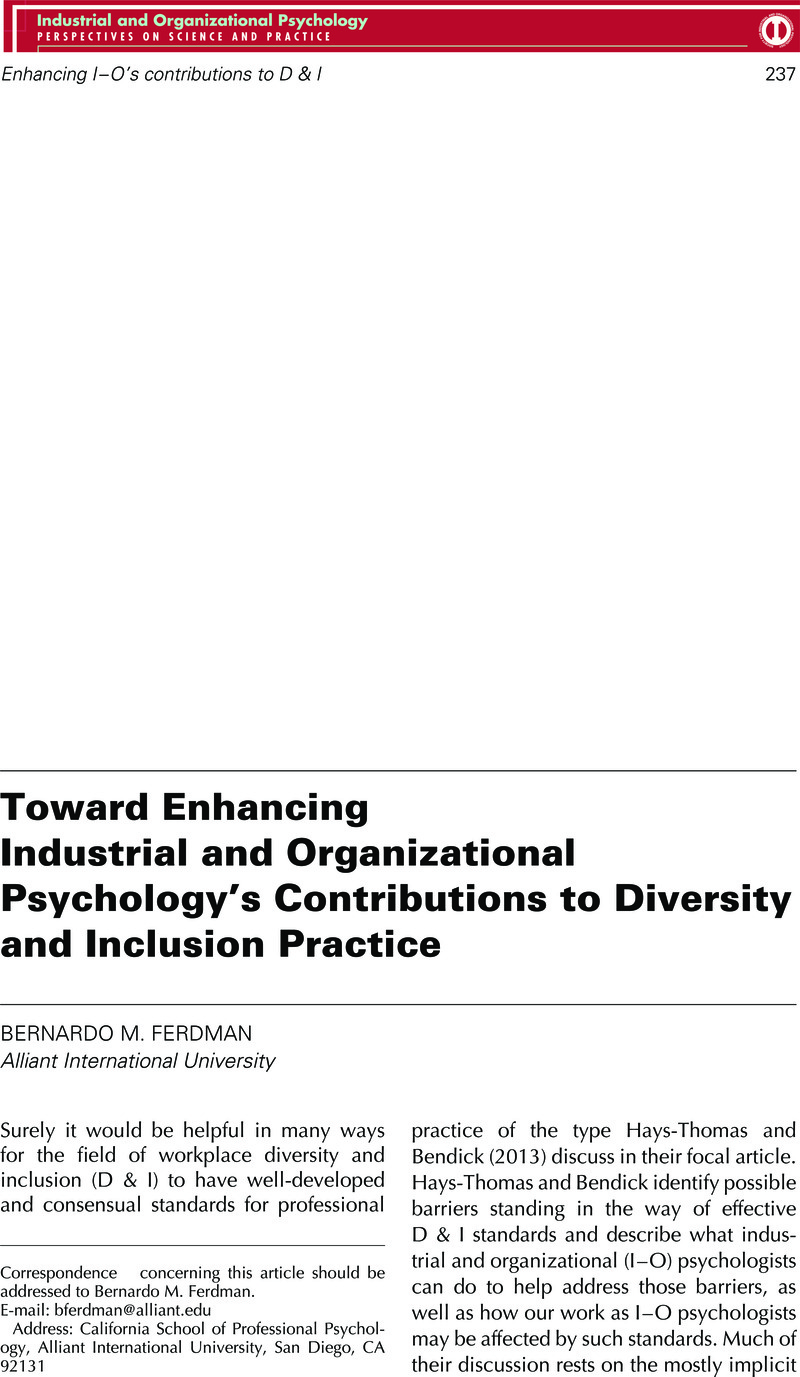Article contents
Toward Enhancing Industrial and Organizational Psychology's Contributions to Diversity and Inclusion Practice
Published online by Cambridge University Press: 07 January 2015
Abstract

- Type
- Commentaries
- Information
- Copyright
- Copyright © Society for Industrial and Organizational Psychology 2013
References
- 2
- Cited by


